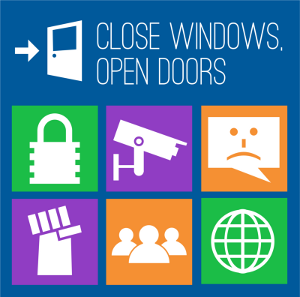Blog Archives
From Around The Web: Red Hat Collaboration with Docker

Redhat recently announced its new collaboration with the developers of the popular Docker software, which enables applications to be packaged with their dependencies into “containers,” rather than requiring a host OS for each application (monolithic approach). This developement is quite interesting, as development of Docker, and bug fixes should increase, as well as this method for sandboxed applications. This should also trickle down to Fedora and like distros that use similar structure (RPM based). The move will primarily focus, at first, at removed the need for AuFS with a provisioning method based on the device-mapper technology in Fedora, RHEL, and others. This will ensure compatibility with upstream kernel versions. Read the rest of this entry
Software Spotlight: easyLife for Fedora
I think the title pretty much says it all. Installing software on Fedora is not “difficult,” even for a new user, but sometimes we just want it to get even easier. Because I am lazy like that sometimes ! While I spend most of my time configuring via the Terminal window, I had to give this a good shot, as there are always cool project going on, and what better on to try that makes being a bum easy? 🙂 Read the rest of this entry
Android App Pick: Mobile Financial/Budgeting With GnuCash for Android
___________
GnuCash is my go-to defacto budgeting/financial program on Linux. I love its double-entry classic system with standard XML protocol support. The only thing missing from GnuCash is an online sync option, in my my opinion. And as you will find out, that same flaw exists in its mobile cousin. Read the rest of this entry
Distro Test Drive: Don’t Go Skydiving, Just Install Arch Linux…
 This is pretty much a full on test drive. From start to finish, of my current distro I am using actively as on my main desktop. Let me tell you right now, Arch Linux is a huge learning experience. You will get mad. You will get frustrated, and trust me you WILL want to give up…several times. This goes for those in the intermediate skill level, such as myself, but obviously the beginners as well. Arch is not to be trifled with. It takes no prisoners, no mercy, and hears no cries of “FUUUUUUUUUUUUUUUUUUUUUUUUU” or the more popular, “IMPOSSIBRU!!”
This is pretty much a full on test drive. From start to finish, of my current distro I am using actively as on my main desktop. Let me tell you right now, Arch Linux is a huge learning experience. You will get mad. You will get frustrated, and trust me you WILL want to give up…several times. This goes for those in the intermediate skill level, such as myself, but obviously the beginners as well. Arch is not to be trifled with. It takes no prisoners, no mercy, and hears no cries of “FUUUUUUUUUUUUUUUUUUUUUUUUU” or the more popular, “IMPOSSIBRU!!”
With that out of the way, let’s get down to looking at what it takes to get a FULL Arch Linux system working:




